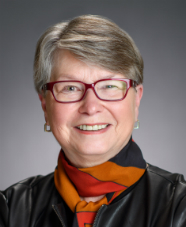News
From the Executive Director: Women Hold up Half the Sky
Mary Todd
Mar 20, 2018
 Some years ago, while teaching a women’s studies class, I noticed several male students looking through the window of the classroom door. They later said they were curious about what went on in women’s studies, since the enrollment was overwhelmingly female. I often wished that more men had brought their curiosity into the classroom rather than speculating from the other side of the door. I still do.
Some years ago, while teaching a women’s studies class, I noticed several male students looking through the window of the classroom door. They later said they were curious about what went on in women’s studies, since the enrollment was overwhelmingly female. I often wished that more men had brought their curiosity into the classroom rather than speculating from the other side of the door. I still do.The prevailing belief at the time – has it changed? – was that women’s studies classes were sites of male-bashing, radical feminist proselytizing, and uncompromising demands for women’s rights. In reality, faculty worked to bring hope into our classrooms, as the content could be downright depressing. Stories of rape as an instrument of war; of legal, cultural and religious discrimination; of economic hardship and physical abuse offered little to celebrate. The few glimmers of light were found in women’s voices, activism, and steadfastness in the face of challenging circumstances.
Such stories of struggle are the stuff of history. Consider, if you will, a bit of recent American history.
1992 was declared the Year of the Woman due to the unparalleled number of women elected to both houses of Congress. The dramatic voter response was credited to women’s unhappiness over the confirmation of Clarence Thomas to the Supreme Court despite allegations of sexual harassment brought by Anita Hill during the period both worked for the federal government. Only a year earlier, Pulitzer Prize-winning author Susan Faludi had written Backlash: The Undeclared War Against American Women, which argued that the gains made possible by the second wave of feminism of the 1960s and 1970s were meeting resistance from the American media.
Historian William Chafe, who considers women’s progress the most significant change of the twentieth century, describes this in a word: paradox. Steps forward were met by the backlash Faludi described, which in turn saw the advances in congressional representation. Such cycles are not atypical of reform movements in American history. For every action there is an equal and opposite reaction.
Fast forward twenty-five years to 2017, and the unprecedented engagement of women in activism, many in response to the results of the 2016 presidential election. Beginning with the Women’s March last January that brought millions of people into the streets of cities around the world, women raised their voices and declared their resistance to the new administration. Many decided to run for office.
In the fall of 2017, another activist movement evolved after public allegations of sexual harassment were brought against media moguls, anchormen, political and sports figures. The #MeToo hash tag spread like wildfire across social media, revealing the extent of women’s (and some men’s) experiences with harassment in the workplace.
Today, despite women comprising the majority of undergraduate students (that’s been true since 1979), graduate students, and medical and law students, we still learn daily of domestic violence, workplace discrimination, pay differentials, and double standards. The number of women CEOs in Fortune 500 companies hovers just over six percent. And no woman has yet been elected president of the United States.
The Chinese have a saying, attributed to Mao Zedong, “Women hold up half the sky.” Women globally have taken that expression to heart in their efforts not only to become more involved and engaged through activism, but in acknowledgement that it truly does take all of us – women and men together, each with our own individual gifts -- to ensure the future for generations to come.